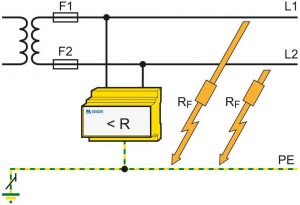RF Circuits
The rf circuit is the component in a circuit that processes radio frequency signals. Unlike analog and digital circuits that operate at lower frequencies, RF circuits have much higher frequencies and are thus more sensitive to environmental effects such as moisture. RF circuits require additional design considerations that must be addressed to deliver the desired performance.
RF circuits are the heart of wireless communication systems. They are also found in consumer electronics, sensors and other electronic devices. When designed properly, RF PCBs can deliver reliable, high-performance functionality. However, rf circuits are not without challenges when it comes to maintaining quality and reliability in harsh environments.
Moisture resistance is an important factor to consider when designing a rf circuit. RF signals generate electromagnetic radiation (EMR) that can interfere with other circuitry or even the environment. This energy may impact circuit performance or, at high enough levels, cause damage to human brain cells. The goal of RF circuit design is to reduce EMR to acceptable levels for safe operation and performance.

RF Circuits and Moisture Resistance
Depending on the design requirements, a rf circuit can use one of many different substrate materials. Typical choices include FR-4, a glass and epoxy laminate, G-10, a woven fiberglass and epoxy laminate, and PTFE (or “Teflon”). Each material has its own set of characteristics including thermal expansion, tensile strength, flexural strength, bond strength, dielectric constant, and moisture absorption.
The stackup of a rf circuit is also important to consider for moisture resistance. RF circuits typically feature thicker Rogers core materials, with routing signals on the surface layer and GND on an inner layer called a “bondply.” Using a hybrid material stackup like this can provide greater moisture resistance in the critical areas of the circuit.
RF circuit designers must carefully analyze the stackup and the resulting impedance of the signal paths. This requires a good understanding of basic physics and math as well as access to a powerful design tool that can handle the complex electrical parameters involved in RF circuits. Fortunately, tools such as Altium Designer + Altium 365 enable RF circuit designers to easily enter schematics, perform advanced signal integrity simulation and perform rapid post-layout physical layout with confidence.